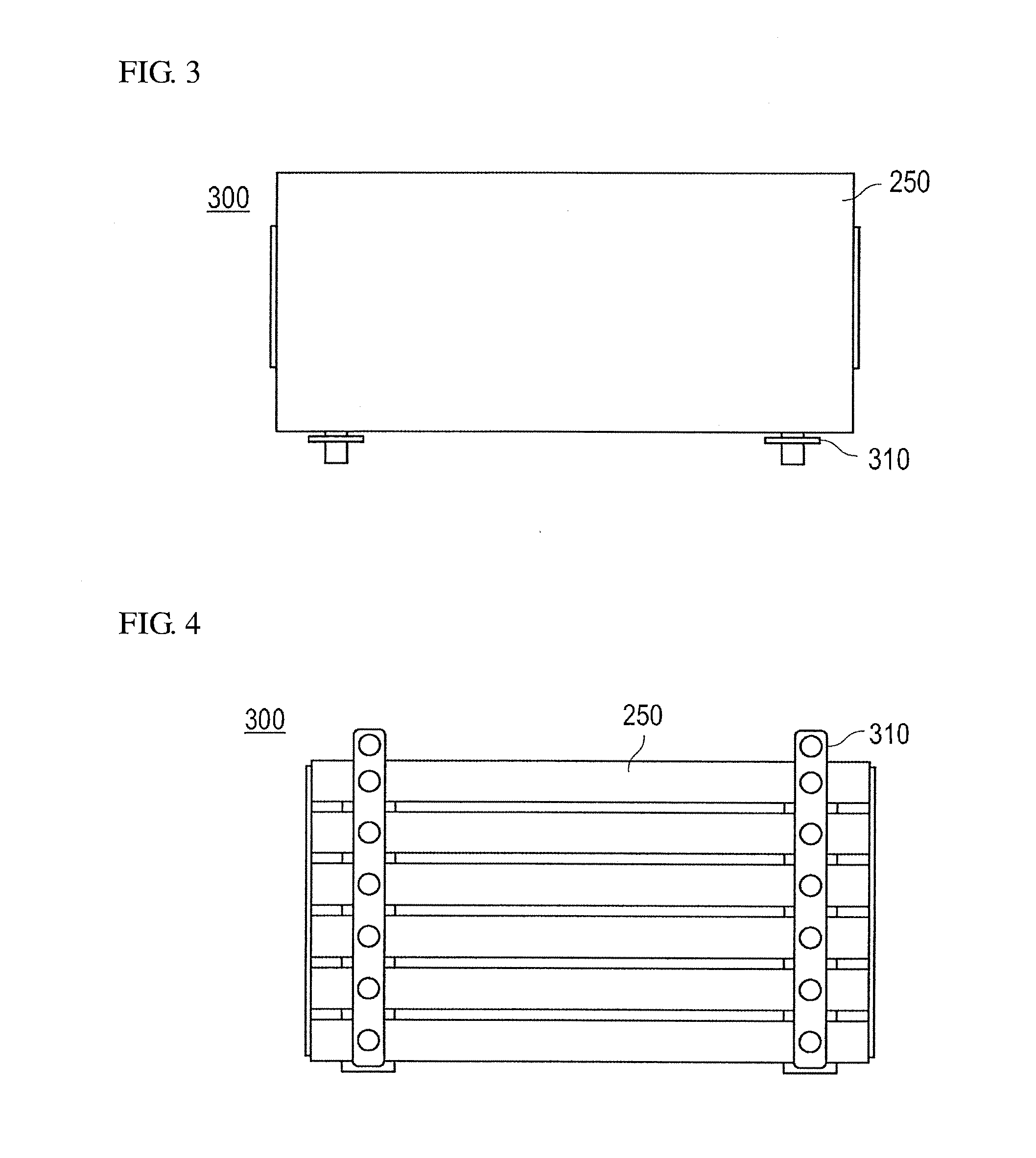Bipolar secondary battery and method for producing the same
a secondary battery, bipolar technology, applied in the direction of cell components, sustainable manufacturing/processing, flat cell grouping, etc., can solve the problems of deterioration in battery output density and energy density, reduced power output of batteries, and disadvantages of connectors in space efficiency, etc., to achieve good seal durability and higher seal durability
- Summary
- Abstract
- Description
- Claims
- Application Information
AI Technical Summary
Benefits of technology
Problems solved by technology
Method used
Image
Examples
example 1
[0091]A positive electrode active material paste was prepared by mixing 85 mass % of LiMn2O4 as a positive electrode active material, 5 mass % of acetylene black as a conduction aid, 10 mass % of polyvinylidene fluoride (PVdF) as a binder and an appropriate amount of N-methyl-2-pyrrolidone (NMP) as a slurry viscosity adjusting solvent. A negative electrode active material paste was prepared by mixing 85 mass % of Li4Ti5O12 as a negative electrode active material, 5 mass % of acetylene black as a conduction aid, 10 mass % of polyvinylidene fluoride (PVdF) as a binder and an appropriate amount of N-methyl-2-pyrrolidone (NMP) as a slurry viscosity adjusting solvent. Further, a collector was provided in the form of a conductive resin layer (thickness: 30 μm, volume resistivity in thickness direction: 1×10−2 Ω·cm) containing polyethylene as a base material and carbon particles (average particle size: 0.8 μm) as a conductive filler. A positive electrode active material layer was formed on...
example 2
[0092]Bipolar electrodes were produced in the same manner as in Example 1, except for using polypropylene as the base material of the collectors.
example 3
[0093]Bipolar electrodes were produced in the same manner as in Example 1, except for using polyimide as the base material of the collectors.
Comparative Example 1
[0094]Bipolar electrodes were produced in the same manner as in Example 1, except for using SUS foil films (thickness: 30 μm) as the collectors.
Production of Bipolar Secondary Battery
PUM
| Property | Measurement | Unit |
|---|---|---|
| Pore size | aaaaa | aaaaa |
| Area | aaaaa | aaaaa |
| Particle size | aaaaa | aaaaa |
Abstract
Description
Claims
Application Information
 Login to View More
Login to View More - R&D
- Intellectual Property
- Life Sciences
- Materials
- Tech Scout
- Unparalleled Data Quality
- Higher Quality Content
- 60% Fewer Hallucinations
Browse by: Latest US Patents, China's latest patents, Technical Efficacy Thesaurus, Application Domain, Technology Topic, Popular Technical Reports.
© 2025 PatSnap. All rights reserved.Legal|Privacy policy|Modern Slavery Act Transparency Statement|Sitemap|About US| Contact US: help@patsnap.com



